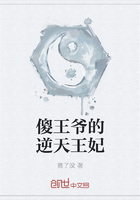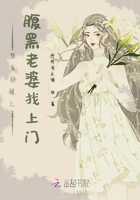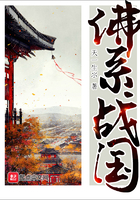The cherry tree is something the same, but more sturdy. Now, in the last week of April, the cherry blossom is still white, but waning and passing away: it is late this year, and the leaves are clustering thick and softly copper in their dark blood-filled glow. It is queer about fruit trees in this district. The pear and the peach were out together. But now the pear tree is a lovely thick softness of new and glossy green, vivid with a tender fullness of apple-green leaves, gleaming among all the other green of the landscape, the half-high wheat, emerald, and the grey olive, half-invisible, the browning green of the dark cypress, the black of the evergreen oak, the rolling of the heavy green puffs of the stone-pines, the flimsy green of small peach and almond trees, the sturdy young green of horse-chestnut. So many greens, all in flakes and shelves and tilted tables and round shoulders and plumes and shaggles and uprisen bushes, of greens and greens, sometimes blindingly brilliant at evening, when the landscape looks as if it were on fire from inside, with greenness and with gold.
In the wood, the scrub-oak is only just coming uncrumpled, and the pines keep their hold on winter. They are wintry things, stone-pines. At Christmas, their heavy green clouds are richly beautiful. When the cypresses rise their tall and naked bodies of dark green, and the osiers are vivid red-orange, on the still blue air, and the land is lavender; then, in mid-winter, the landscape is most beautiful in colour, surging with colour.
Not that this week is flowerless. But the flowers are a little lonely things, here and there: the early purple orchid, ruddy and very much alive, you come across occasionally, then the little groups of bee-orchids, with their ragged concerted indifference to their appearance. Also there are the huge bud-spikes of the stout, thick flowering pink orchid, huge buds like fat ears of wheat, hard-purple and splendid. But already odd grains of the wheat-ear are open, and out of the purple hangs the delicate pink rag of floweret. Also there are very lovely and choice cream-clouted orchids with brown spots on the long and delicate lip. These grow in the more moist places, and have exotic tender spikes, very rare-seeming. Another orchid is a little, pretty yellow one.
By May, the nightingale will sing an unbroken song, and the discreet, barely audible Tuscan cuckoo will be a little more audible. Then the lovely pale-lilac irises will come out in all their showering abundance of tender, proud, spiky bloom, till the air will gleam with mauve, and a new crystalline lightness will be everywhere.
There will be tufts of iris everywhere, arising up proud and tender. When the rose-coloured wild gladiolus is mingled in the corn, and the love-in-the-mist opens blue: in May and June, before the corn is cut.
But as yet is neither May nor June, but the end of April, the pause between spring and summer, the nightingale singing uninterrupted, the bean-flowers dying in the bean-fields, the bean-perfume passing with spring, the little birds hatching in the nests, the olives pruned, and the vines, the last bit of late ploughing finished, and not much work to hand, now, not until the peas are ready to pick, in another two weeks or so.
So the change, the endless and rapid change. In the sunny countries, the change seems more vivid, and more complete than in the grey countries. In the grey countries, there is a grey or dark permanency, over whose surface passes change ephemeral, leaving no real mark.
But in the sunny countries, change is the reality and permanence is artificial and a condition of imprisonment. Hence, to the northerner, the phenomenal world is essentially tragical, because it is temporal and must cease to exist. Its very existence implies ceasing to exist, and this is the root of the feeling of tragedy.
But to the southerner, the sun is so dominant that shadow, or dark, is only merely relative: merely the result of something getting between one and the sun.
In the human race, the one thing that is always there is the shining sun, and dark shadow is an accident of intervention.
For my part, if the sun always shine, and always will shine, in spite of millions of clouds of words. In the sunshine, even death is sunny. And there is no end to the sunshine.
That is why the rapid change of the Tuscan spring is utterly free, for me, of any senses of tragedy. The sun always shines. It is our fault if we don' t think so.
在阿尔卑斯山的北面,持续的冬天受到了夏季的顽强抵抗,很快屈服了。而其南面,夏季被间歇性的、充满敌意的寒冬阻挡,永远也不能真正占上风。在两者的斗争中,任何一种情况都只是可能。但是,阳光普照的地方,永远都是阿尔卑斯山的南面。
清晨,阳光强烈地照射在地平线上松树团团的绿雾上,天空清新,充满了生机。河水急匆匆地流着,直到被最后一些压碎的橄榄?染成棕色。遍地的番红花更是令人诧异不已。你不会相信这些花是静止的。它们如此欢快地绽放,雌蕊是那样的橘红。不计其数的花朵竞相开放,争奇斗艳,让人如痴如醉。花朵们翩翩起舞,那明亮起来的紫和橙色调,和着无形的美妙节奏欢快地摆动。你不得不相信它们在动,而且发出了水晶般的欢快声。如果你静静地欣赏花朵,你就会不由自主地随着它们舞动,就好像跟着星星走一样。当然,你还会听到花朵们欢快的笑声。花的每一个小细胞都跳跃着绚丽的生命和思想。
现在正是三月,也是花儿竞相开放的时节。在其他一些朝太阳方向流动的溪流边,荆棘灌木交错,菟葵无助而不屈地对抗冬天,一丛丛白色的樱草花出乎意料地生长着。丛丛的樱草花占满了杂乱的灌木丛和溪水的拐角处。可它们比菟葵无助,更加苍白,比英格兰的樱草花单薄许多。樱草花不像北面的花朵那样让人惊奇。人们往往注意不到它,而是会被长在河岸边庄严而美丽的紫罗兰所吸引,当然会更愿意欣赏那些深紫色的风信子小花塔。
三月,刚好是溪边灌木乱丛中白色的野李花朦朦胧胧,粉红的桃树独自站立在山坡的时节。银粉色的杏花已渐渐褪去,桃树裹着深深的蓝,一点儿也不飘逸,却是本来面目,而桃树与杏树看起来就像毫不相干的个体。绿意盎然的春天里,桃树的粉色是如此别致。因为最先从冬天开出来的花,通常看起来都是白色、黄色或紫色的。白屈菜也冒出头来了。在湖边高大强壮的银莲花中,你可以发现深紫色、黑色的花蕊。
雏菊穿着红色的衣服成群地跑出来,开始的时候,它们长得又大又漂亮。可是渐渐地,进入三月中下旬,花就变成了光鲜的小东西,像小小的纽扣聚在一起。这预示着夏天的来临。
你还可以在一些地方,看到一些修长、带穗的黄色郁金香。在细长的穗上嵌着光亮的黄色,十分惹人喜爱。不过,它们也很快变得倾斜,然后虚弱起来,仿佛幻觉一样消失得无影无踪。
郁金香离开以后,在夏天前,花儿们都短暂地歇息了一下。夏天即将到来。
寂静的四月底,在花儿们踌躇不定的时候,叶子们一股脑地跑了出来。一时间,纯净的绿色在无花果的树枝尖冒出,好像烛台顶那生动的绿色小火舌头一样在燃烧。现在,这团绿焰伸展开来,变成小手的样子,触摸着夏天的气息。小小的绿色无花果像一只山羊喉咙的腺体附在下面。
现在,山坡上白杨的叶子上有一层半透明薄膜的叶脉,显得格外引人注目。与秋天不同,这些叶子是金棕色的,像是薄翼的蝙蝠,它们如同鸟儿一样——我们暂且就叫它们鸟吧——在落日的余晖中,叶子在云层里涌动,太阳照射在这薄翼à紧似的薄膜上,仿佛透过棕红色的彩绘玻璃。这是夏天里树叶旺盛时所特有的红色树液,并不意味着秋天的红尘。















